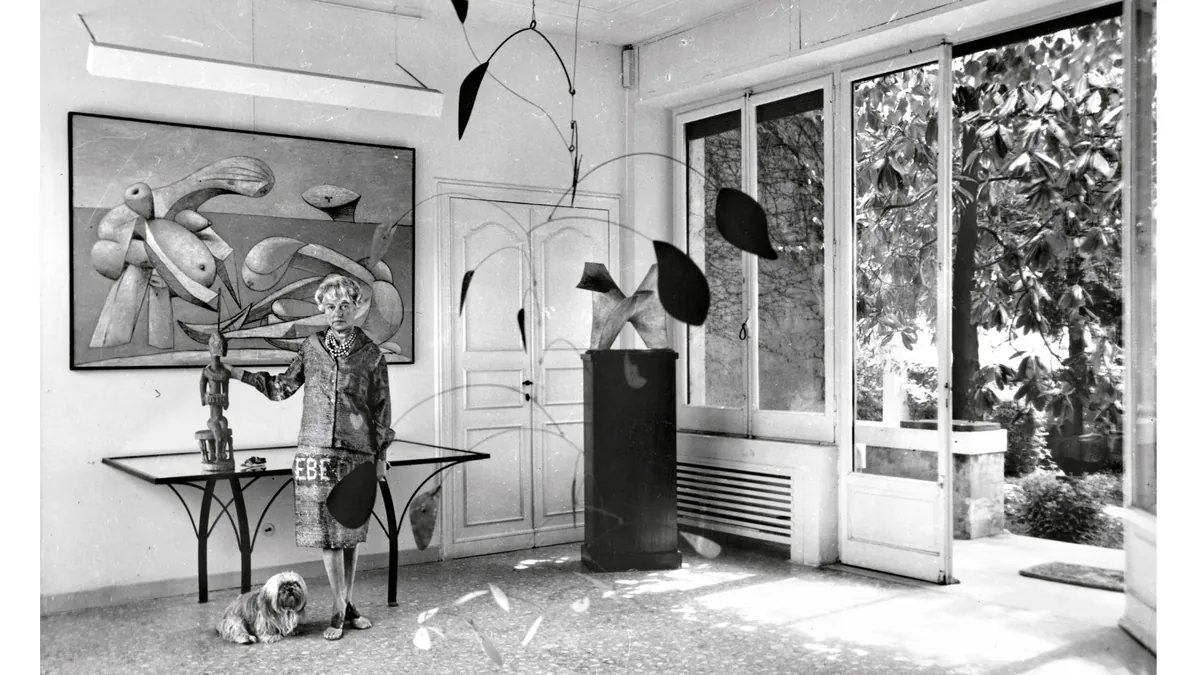Rebecca Godfrey's unfinished novel about art collector Peggy Guggenheim has been completed posthumously by writer Leslie Jamison. The book, titled "Peggy," offers a unique perspective on the life of this influential figure in the art world.
Godfrey, who passed away in 2022 at the age of 54, left the manuscript two-thirds complete. Jamison, tasked with finishing the work, initially hesitated, immersing herself in extensive research before adding her words to Godfrey's.
The novel focuses on the first half of Guggenheim's life, from her privileged yet unhappy childhood to her relocation to Paris and the beginnings of her career as a gallerist. It covers her difficult first marriage and other relationships, concluding with her passionate affair with Samuel Beckett around 1938-1939.
Guggenheim's life was marked by significant events and tragedies. Born on August 26, 1898, in New York City, she inherited a fortune from her father, Benjamin Guggenheim, who perished in the Titanic disaster in 1912. The novel touches on various aspects of her life, including her sister Benita's struggles with pregnancy and the tragic deaths of her sister Hazel's children.
The book portrays Guggenheim as a complex character with a resilient attitude towards life's hardships. This portrayal aligns with her real-life persona, as evidenced by her autobiography "Out of This Century," published in 1946.
"We appear lush and crisp. We're clouds; we're temporary; we're pure sweetness; the tipped flower of a wedding cake. We're the white of things that hover and tempt."
Godfrey's writing style, known for exploring darker themes, is evident in "Peggy." The author's previous works, including "The Torn Skirt" (2002) and "Under the Bridge" (2005), dealt with challenging subjects. A Hulu adaptation of "Under the Bridge" premiered in spring 2023, featuring Riley Keough and Lily Gladstone.
The novel provides vivid descriptions of key moments in Guggenheim's life, such as her iconic photo session with Man Ray in the 1920s. It also delves into her relationships with literary figures like Djuna Barnes and Emma Goldman, and her crucial role in acquiring and rescuing important pieces of modern art on the eve of the Nazi occupation.
Guggenheim's career as an art collector and gallerist is a central theme in the book. She opened her first gallery, Guggenheim Jeune, in London in 1938, and later established the Art of This Century gallery in New York in 1942. Her move to Venice in 1947 and the subsequent opening of the Peggy Guggenheim Collection to the public in 1951 marked significant milestones in her life and the art world.
The epilogue, set in Guggenheim's Venice palazzo, provides perspective on her later years and the cultural force she became. Today, the Peggy Guggenheim Collection is one of the most visited attractions in Venice, housing her famous art holdings.
"Peggy" serves as an excellent starting point for those interested in learning more about this influential figure in modern art. While the novel doesn't cover all aspects of Guggenheim's life, it offers a compelling narrative that captures her essence and impact on the art world.
